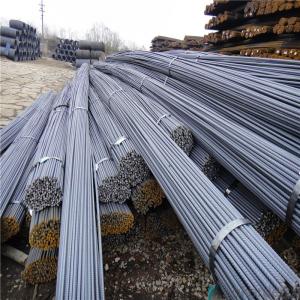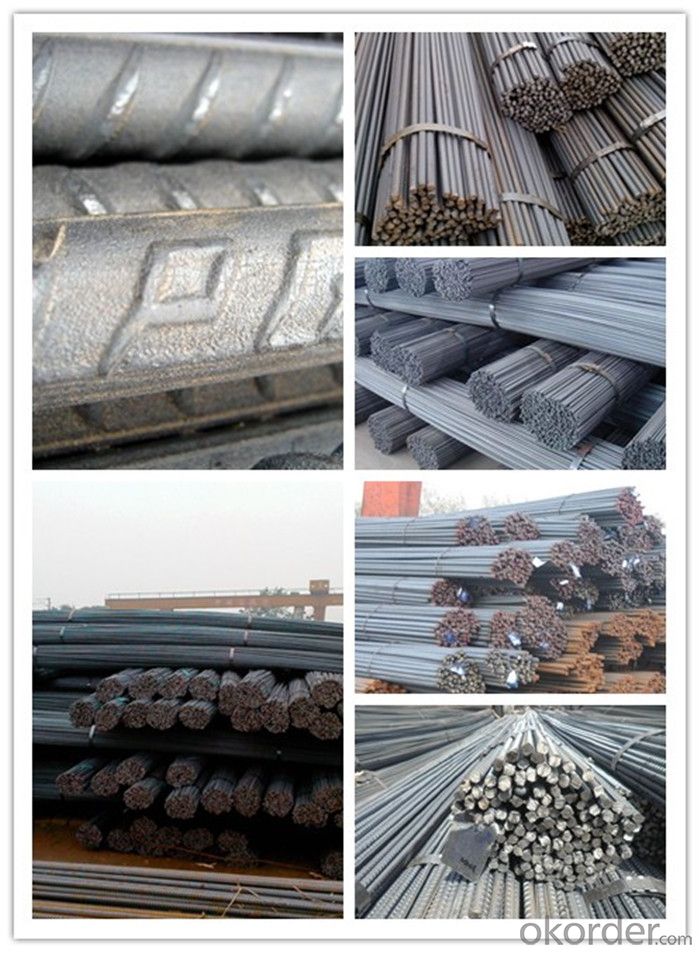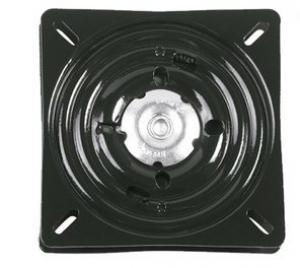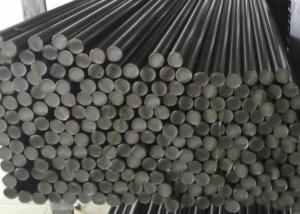High Tensile Deformed Steel Bar
- Loading Port:
- Tianjin
- Payment Terms:
- TT OR LC
- Min Order Qty:
- 100 m.t.
- Supply Capability:
- 50000 m.t./month
OKorder Service Pledge
OKorder Financial Service
You Might Also Like
Item specifice
High Tensile Deformed Steel Bar
Description of High Tensile Deformed Steel Bar:
1, Diameter: 5.5mm-10mm rounds reinforcing steel bar
10m- 40 rods reinforcing High Tensile Deformed Steel Bar
2, Length: 6m, 9m, 12m or customized
3, Standard: GB, ASTM, AISI, SAE, DIN, JIS, EN
OEM technology - send detailed technical parameters for accurate quotation.
2, Produce Process: smelt iron - EAF smelt billet - ESR smelt billet -
hot rolled or forged to get the steel round bar and plate
3, Heat Treatment: annealing, normalizing, tempering, quenching
4, Surface Treatment: Black
5, Quality Assurance: We accept third party inspection for all orders.
You can ask testing organizations such as SGS, BV, etc. to test our products before shipping.
Chemical Composition of High Tensile Deformed Steel Bar:
Grade | Technical data of the original chemical composition(%) | |||||
Reinforcing steel bar HRB335 | C | Mn | Si | S | P | B |
≤0.25 | ≤1.60 | ≤0.80 | ≤0.045 | ≤0.045 | >0.0008 | |
Physics Capability | ||||||
Yield Strength(N/cm2) | Tensile Strength(N/cm2) | Elongation(%) | ||||
≥ 335 | ≥490 | ≥16 | ||||
Reinforcing steel bar HRB400 | C | Mn | Si | S | P | B |
≤0.25 | ≤0.16 | ≤0.80 | ≤0.045 | ≤0.045 | 0.04-0.12 | |
Physics Capability | ||||||
Yield Strength(N/cm2) | Tensile Strength(N/cm2) | Elongation(%) | ||||
≥ 400 | ≥ 570 | ≥ 14 | ||||
Product Show of High Tensile Deformed Steel Bar:
Company Information:
CNBM International Corporation is the most important trading platform of CNBM group.
Whith its advantages, CNBM International are mainly concentrate on Cement, Glass, Iron and Steel, Ceramics industries and devotes herself for supplying high qulity series of refractories as well as technical consultancies and logistics solutions.

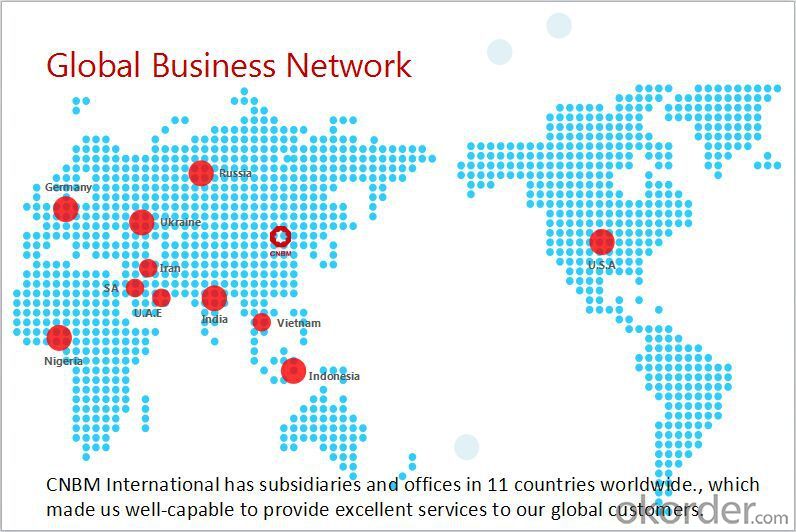
FAQ:
1, Your advantages?
professional products inquiry, products knowledge train (for agents), smooth goods delivery, excellent customer solution proposale
2, Test & Certificate?
SGS test is available, customer inspection before shipping is welcome, third party inspection is no problem
3, Factory or Trading Company?
CNBM is a trading company but we have so many protocol factories and CNBM works as a trading department of these factories. Also CNBM is the holding company of many factories.
4, Payment Terms?
30% TT as deposit and 70% before delivery.
Irrevocable L/C at sight.
5, Trading Terms?
EXW, FOB, CIF, FFR, CNF
6, After-sale Service?
CNBM provides the services and support you need for every step of our cooperation. We're the business partner you can trust.
For any problem, please kindly contact us at any your convenient time.
We'll reply you in our first priority within 24 hours.
- Q:How is special steel used in the manufacturing of tools and dies?
- Special steel is widely used in the manufacturing of tools and dies due to its exceptional properties that make it suitable for these applications. Special steel, also known as tool steel, is specifically designed to have high hardness, wear resistance, toughness, and heat resistance. In the manufacturing of tools, such as drills, saws, hammers, and chisels, special steel is used to ensure durability and long tool life. The high hardness of special steel allows these tools to withstand the rigors of cutting, drilling, and shaping without easily dulling or deforming. Additionally, the wear resistance of special steel ensures that these tools can maintain their sharp cutting edges for an extended period, reducing the need for frequent sharpening or replacement. Moreover, in the production of dies used in various manufacturing processes, special steel plays a crucial role. Dies are used to shape materials into specific forms or sizes, such as in forging, stamping, or extrusion processes. The high toughness of special steel allows dies to withstand the high pressure and impact forces involved in these processes without cracking or fracturing. Additionally, the heat resistance of special steel ensures that dies can withstand the elevated temperatures generated during these operations without losing their shape or hardness. Special steel also offers excellent machinability, allowing it to be easily shaped and formed into complex tool and die designs. This property is significant in manufacturing, as it enables the production of intricate and precise tools and dies, leading to improved product quality and efficiency. Overall, special steel is an essential material in the manufacturing of tools and dies due to its exceptional hardness, wear resistance, toughness, heat resistance, and machinability. These properties ensure the durability, long tool life, and high performance of tools and dies, contributing to the overall efficiency and quality of various manufacturing processes.
- Q:How does special steel contribute to the hardness of products?
- Special steel contributes to the hardness of products through its unique composition and manufacturing process. It contains alloying elements such as chromium, tungsten, and manganese, which enhance its strength and resistance to wear and tear. The controlled heat treatment during production further refines the steel's microstructure, resulting in increased hardness. This hardness enables special steel to withstand high pressures, impacts, and abrasive forces, making it ideal for applications where durability and strength are crucial, such as in tools, machinery, and construction materials.
- Q:What are the different surface treatments applied to special steel?
- The different surface treatments applied to special steel include galvanizing, electroplating, powder coating, painting, passivation, nitriding, and heat treatment. These treatments are used to enhance the corrosion resistance, hardness, and aesthetics of the steel, depending on the specific application requirements.
- Q:What are the common applications of stainless special steel?
- Stainless special steel is commonly used in a wide range of applications due to its unique properties and characteristics. Some of the most common applications include kitchenware and cookware, cutlery, medical equipment, automotive parts, aerospace components, construction materials, and various industrial machinery. Its corrosion resistance, high strength, durability, and aesthetic appeal make it a preferred choice in these industries.
- Q:What are the different methods of improving the corrosion resistance of special steel?
- There are several methods available for improving the corrosion resistance of special steel. Some of the commonly used methods include: 1. Alloying: One of the most effective ways to enhance corrosion resistance is by alloying the steel with specific elements. For example, adding chromium to steel forms a protective chromium oxide layer on the surface, which acts as a barrier against corrosion. Other elements like molybdenum, nickel, and copper can also be added to improve corrosion resistance. 2. Surface treatments: Various surface treatments can be applied to the steel to enhance its corrosion resistance. For instance, galvanizing involves coating the steel with a layer of zinc, which protects it from corrosion. Electroplating is another method where a thin layer of a more corrosion-resistant metal, such as nickel or chromium, is deposited onto the steel surface. 3. Passivation: Passivation is a chemical process that removes free iron and other contaminants from the steel surface, creating a passive film that aids in corrosion resistance. This method is commonly used for stainless steel, where a thin layer of chromium oxide is formed by treating the steel with an oxidizing agent like nitric acid. 4. Protective coatings: Applying protective coatings on the steel surface can significantly improve its corrosion resistance. There are various types of coatings available, such as paints, epoxy coatings, and ceramic coatings. These coatings act as a barrier between the steel and the corrosive environment, preventing direct contact and corrosion. 5. Heat treatment: Heat treatment techniques like annealing, quenching, and tempering can modify the microstructure of the steel, enhancing its corrosion resistance. Heat treatment can improve the steel's mechanical properties, reduce residual stresses, and remove impurities, all of which contribute to better corrosion resistance. 6. Design considerations: Proper design and construction techniques can play a crucial role in improving the corrosion resistance of special steel. For example, eliminating sharp corners and crevices where corrosion can occur, using appropriate drainage systems, and ensuring proper ventilation can prevent the accumulation of moisture and corrosive agents. It is worth noting that the selection of the most suitable method depends on the specific application, environment, and desired level of corrosion resistance. A combination of these methods may also be employed to achieve optimal results.
- Q:Can special steel be used in the paper manufacturing industry?
- Yes, special steel can be used in the paper manufacturing industry. Special steels, such as stainless steel, can be used to make various components and equipment used in the paper manufacturing process. These steels offer excellent corrosion resistance, high strength, and durability, making them suitable for applications like paper machine parts, rollers, blades, and screens. Additionally, special steels can withstand high temperatures and mechanical stress, enhancing the overall efficiency and reliability of paper manufacturing operations.
- Q:What are the different methods of surface ion nitriding for special steel?
- There are several methods of surface ion nitriding that can be used for special steel. These methods include: 1. DC Plasma Nitriding: This method involves the use of a direct current (DC) plasma to ionize nitrogen gas and create a plasma atmosphere. The special steel is placed in the plasma chamber and a high voltage is applied to accelerate the ions towards the surface of the steel, resulting in nitriding. 2. RF Plasma Nitriding: RF (Radio Frequency) plasma nitriding is a similar process to DC plasma nitriding, but instead of using a direct current, a radio frequency power supply is used to generate the plasma. This method allows for better control of the nitriding process and can be used for more complex geometries. 3. Pulse Plasma Nitriding: In this method, short pulses of high voltage are applied to the steel surface, creating a plasma discharge. The pulses are repeated at regular intervals, allowing for precise control over the nitriding process. This method is often used for steels with sensitive properties that can be affected by prolonged exposure to high temperatures. 4. Plasma Assisted Nitriding: This method combines plasma nitriding with other surface treatment techniques, such as physical vapor deposition (PVD) or chemical vapor deposition (CVD). The steel is first coated with a thin layer of a reactive material, and then nitrided in a plasma atmosphere. This combination of techniques can enhance the surface properties of the special steel, such as wear resistance or corrosion resistance. 5. Glow Discharge Nitriding: This method involves placing the special steel in a chamber filled with a nitrogen-rich gas, such as ammonia. A high voltage is applied to create a glow discharge, which ionizes the gas and generates nitrogen ions that diffuse into the surface of the steel. This method is commonly used for small parts or components with complex shapes. It is important to note that the selection of the most appropriate method for surface ion nitriding of special steel depends on factors such as the desired properties, the geometry of the steel, and the specific requirements of the application.
- Q:What are the common challenges in welding titanium alloys?
- Welding titanium alloys poses several common challenges, mainly due to the unique properties of titanium. First, titanium has a high melting point, around 1668°C (3034°F), which requires specialized equipment and techniques to achieve optimal welding conditions. This high melting point also increases the risk of overheating and subsequent distortion or warping of the welded parts. Another challenge is the high reactivity of titanium with oxygen, nitrogen, and hydrogen. During the welding process, these gases can easily contaminate the weld pool, leading to the formation of brittle and porous welds. Therefore, stringent measures such as using inert shielding gases like argon or helium, maintaining a high level of cleanliness, and employing proper welding techniques like gas tungsten arc welding (GTAW) are necessary to minimize contamination and achieve sound welds. Titanium also has a strong affinity for carbon, which can result in the formation of brittle intermetallic compounds during welding. To prevent this, it is crucial to use low-carbon filler metals and ensure proper heat input to avoid carbon diffusion into the weld zone. Furthermore, titanium alloys have a low thermal conductivity, which means that heat generated during welding tends to concentrate in a small area, leading to localized overheating and potential damage. Therefore, controlling heat input and employing appropriate welding techniques to distribute heat evenly are crucial to avoid overheating and maintain the integrity of the welded joint. Lastly, titanium alloys exhibit a high thermal expansion coefficient, causing significant thermal expansion and contraction during the welding process. This can result in distortion and residual stresses in the welded parts. To mitigate these issues, preheating and post-weld heat treatment may be necessary to minimize distortion and relieve residual stresses. In summary, the common challenges in welding titanium alloys include high melting point, reactivity with gases, potential contamination, formation of intermetallic compounds, low thermal conductivity, and significant thermal expansion. By understanding these challenges and implementing appropriate welding techniques, it is possible to overcome these difficulties and achieve high-quality welds in titanium alloys.
- Q:What are the different surface coatings available for special steel?
- There are several different surface coatings available for special steel, such as galvanizing, electroplating, powder coating, and organic coatings. Each coating offers unique benefits and characteristics, ranging from enhanced corrosion resistance to improved aesthetic appearance and durability. The choice of coating depends on the specific requirements of the application and the desired outcome for the steel product.
- Q:What are the varieties of special steel
- China and Japan, the definition of special steel is relatively close, the special steel into high quality carbon steel, alloy steel, high alloy steel (alloy element is greater than 10%) three categories
1. Manufacturer Overview |
|
|---|---|
| Location | |
| Year Established | |
| Annual Output Value | |
| Main Markets | |
| Company Certifications | |
2. Manufacturer Certificates |
|
|---|---|
| a) Certification Name | |
| Range | |
| Reference | |
| Validity Period | |
3. Manufacturer Capability |
|
|---|---|
| a)Trade Capacity | |
| Nearest Port | |
| Export Percentage | |
| No.of Employees in Trade Department | |
| Language Spoken: | |
| b)Factory Information | |
| Factory Size: | |
| No. of Production Lines | |
| Contract Manufacturing | |
| Product Price Range | |
Send your message to us
High Tensile Deformed Steel Bar
- Loading Port:
- Tianjin
- Payment Terms:
- TT OR LC
- Min Order Qty:
- 100 m.t.
- Supply Capability:
- 50000 m.t./month
OKorder Service Pledge
OKorder Financial Service
Similar products
New products
Hot products
Related keywords
